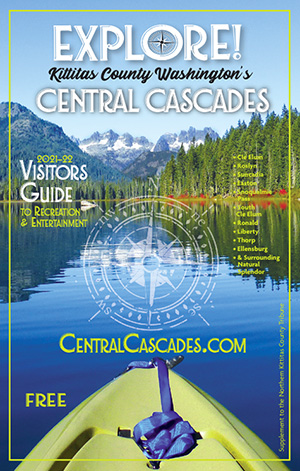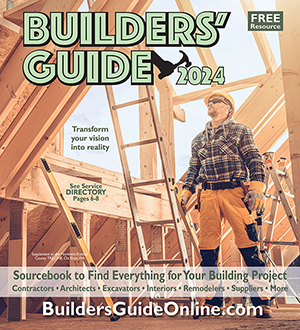Summary of October 6 changes:
• Alcohol service, delivery, and consumption at all establishments must end at 11:00 p.m. until Phase 4.
• In Phase 2 the maximum table size is increased to six (6) individuals and in Phase 3 the maximum table size is increased to eight (8) individuals.
• Removed the household member requirement for in-person dining.
• Other clarifications related to spacing requirements.
Restaurants, taverns, breweries, wineries and distilleries must adopt a written procedure that is at least as strict as the requirements in this document and that complies with the appropriate safety and health requirements and guidelines established by the Washington State Department of Labor & Industries and the Washington State Department of Health.
Prior to recommencing on-site services, all owners are required to develop at each establishment, a comprehensive COVID-19 exposure control, mitigation, and recovery plan which must be adhered to. A site-specific COVID-19 monitor shall be designated at each location to monitor the health of individuals and enforce the COVID-19 job site safety plan. A copy of the plan must be available at all locations and available for inspection by state and local authorities. Failure to meet this requirement may result in sanctions up to, and including, license suspension.
All Establishments
Restaurants, taverns, breweries, wineries and distilleries must ensure strict adherence to all measures established by the Governor’s guidance, the Department of Labor & Industries (L&I) Coronavirus (COVID19) Prevention: General Requirements and Prevention Ideas for Workplaces, and the Washington State Department of Health Workplace and Employer Resources & Recommendations (DOH). All businesses are required to make their customers to use cloth face coverings when interacting with their staff.
1. Hand sanitizer should be available at entry for all staff and patrons (assuming supply availability).
2. If the establishment does not offer table service (i.e. wait staff), they must have protocols in place to ensure adequate social distancing at food and/or drink pick-up stations, and within their seating area.
3. Tables and booths must be placed a minimum of 6 feet away from adjacent tables, or there must be a physical barrier or wall separating booths or tables.
4. Alcohol service, delivery, and consumption, including beer, wine, and spirits, must end at 11:00 p.m. until Phase 4.
5. Vending and other game areas, including billiards, darts, and video games, are prohibited until Phase 4.
6. No bar area seating is permitted. This is the area with a bar table/counter where patrons sit or stand side-by-side. If an establishment has bar area seating it must be closed off to prohibit use. Counter-style seating is permitted in other areas of the establishment (indoors or outdoors). Six feet of distance is required between other tables.
7. Customers must wear a cloth face covering anytime they are not seated (while being seated or leaving, or while going to the restroom) and while they are talking at tables and noteating.
8. Single use menus or reusable menus that are sanitized after each use are required.
9. Minimize the number of staff serving any given table. It is strongly recommended that one staff person take a table’s order, bring all of their beverages/food/utensils, take their payment, etc.
10. All establishments must have implemented a plan to ensure proper physical distancing in lobby/waiting areas/payment counters.
11. Standing is prohibited in any area of establishment, except for the lobby/waiting area and then must be done while maintaining 6 feet of distance between patrons.
12. All live entertainment is prohibited.
13. For liquor licensees who want to add outdoor seating to their premises, please go to the Washington State Liquor and Cannabis Board (WSLCB) website, here, to access the Liquor Alterations Request Form. Please submit completed forms to liquoralterations@lcb.wa.gov.
14. Where feasible, establishments must keep doors and windows open where possible and utilize fans to improve ventilation. Adjust mechanical ventilation systems to bring in as much outside air as possible. Increase filters to MERV 13 if the HVAC can accommodate.
For Restaurants
1. Guest occupancy at restaurants must be 50% of maximum building occupancy or lower as determined by the fire code. Outdoor seating is permitted but must also be at 50% capacity. Outdoor seating does not count toward the building occupancy limit. Outdoor seating must follow all other requirements in this document.
2. In Phase 2 the maximum table size is six (6) individuals and in Phase 3 the maximum table size is eight (8) individuals.
3. For outdoor seating, a temporary structure may be used. Outdoor structures (temporary or permanent) should have no more than two walls to provide appropriate ventilation. The limitation on walls applies to both rigid and flexible walls.
4. Any condiments typically left on the table (ketchup, soy sauce, etc.) must be single-use or sanitized after each use.
5. Buffets and salad bars are permitted and must follow Department of Health guidance.
For Taverns, Breweries, Wineries and Distilleries
1. Indoor seating is prohibited unless the establishment provides all of the following:
- a. Provide a reasonable number of menu items such as: sandwiches, salad, soup, pizza, hamburgers, fry orders, or substantial hors d’oeuvres/appetizers.
- b. These menu items must be prepared onsite and may not be offered by a contractor.
- c. Obtain any required food service permit/license from their local jurisdiction.
2. For outdoor seating, a temporary structure may be used. Outdoor structures (temporary or permanent) should have no more than two walls to provide appropriate ventilation. The limitation on walls applies to both rigid and flexible walls.
3. Guest occupancy is limited to 50% capacity. For both indoor and outdoor seating, follow restaurant requirements (above) for table size limits.
Safety and Health Requirements
All restaurant, tavern, brewery, winery and distillery owners have a general obligation to maintain a safe and healthy workplace in accordance with state and federal law and safety and health rules for a variety of workplace hazards. In addition, they must comply with the following COVID-19 worksite-specific safety practices as outlined in Governor Jay Inslee’s “Safe Start” Proclamation 20-25.4, the Washington State Department of Labor & Industries General Requirements and Prevention Ideas for Workplaces, and the Washington State Department of Health Workplace and Employer Resources and Recommendations. All professional services establishments are required to post signage at the entrance to their business requiring their customers to use cloth face coverings. Employer-owners must specifically ensure operations follow the main L&I COVID-19 requirements to protect professional employee-service providers:
Employers must specifically ensure operations follow the main L&I COVID-19 requirements to protect workers, including:
- Educate workers in the language they understand best about coronavirus and how to prevent transmission and the employer’s COVID-19 policies.
- Maintain minimum six-foot separation between all employees (and customers) in all interactions at all times. When strict physical distancing is not feasible for a specific task, other prevention measures are required, such as use of barriers, minimize staff or customers in narrow or enclosed areas, stagger breaks, and work shiftstarts.
- Provide personal protective equipment (PPE) such as gloves, goggles, face shields and face masks as appropriate or required to employees for the activity being performed. Cloth facial coverings must be worn by every employee not working alone on the jobsite unless their exposure dictates a higher level of protection under Department of Labor & Industries safety and health rules and guidance. Refer to Coronavirus Facial Covering and Mask Requirements for additional details. A cloth facial covering is described in the Department of Health guidance.
- Ensure frequent and adequate hand washing with adequate maintenance of supplies. Use disposable gloves where safe and applicable to prevent transmission on tools or other items that are shared.
- Establish a housekeeping schedule that includes frequent cleaning and sanitizing with a particular emphasis on commonly touched surfaces.
- Screen employees for signs/symptoms of COVID-19 at start of shift. Make sure sick employees stay home or immediately go home if they feel or appear sick. Cordon off any areas where an employee with probable or confirmed COVID-19 illness worked, touched surfaces, etc. until the area and equipment is cleaned and sanitized. Follow the cleaning guidelines set by the CDC to deep clean and sanitize.
A site-specific COVID-19 Supervisor shall be designated by the employer at each job site to monitor the health of employees and enforce the COVID-19 job site safety plan.
A worker may refuse to perform unsafe work, including hazards created by COVID-19. And, it is unlawful for their employer to take adverse action against a worker who has engaged in safety- protected activities under the law if their work refusal meets certain requirements.
Employees who choose to remove themselves from a worksite because they do not believe it is safe to work due to the risk of COVID-19 exposure may have access to certain leave or unemployment benefits.
Employers must provide high-risk individuals covered by Proclamation 20-46 with their choice of access to available employer-granted accrued leave or unemployment benefits if an alternative work arrangement is not feasible. Other employees may have access to expanded family and medical leave included in the Families First Coronavirus Response Act, access to use unemployment benefits, or access to other paid time off depending on the circumstances. Additional information is available at https://www.lni.wa.gov/agency/outreach/paid-sick-leave- and-coronavirus-covid-19-common-questions.
No restaurant, tavern, brewery, winery or distillery may operate until they can meet and maintain all the requirements in this document, including providing materials, schedules and equipment required to comply. No reopening inspections are required prior to a restaurant reopening provided they meet and maintain all requirements in this document. All issues regarding worker safety and health are subject to enforcement action under L&I’s Division of Occupational Safety and Health (DOSH).
- Employers can request COVID-19 prevention advice and help from L&I’s Division of Occupational Safety and Health (DOSH).
- Employee Workplace safety and health complaints may be submitted to the L&I DOSH Safety Call Center: (1-800-423-7233) or via e-mail toadag235@lni.wa.gov.
- General questions about how to comply with agreement practices can be submitted to the state’s Business Response Center at https://coronavirus.wa.gov/how-you-can-help/covid-19- business and-worker-inquiries.
- All other violations related to Proclamation 20-25 can be submitted at https://coronavirus.wa.gov/report-safe-start-violation



